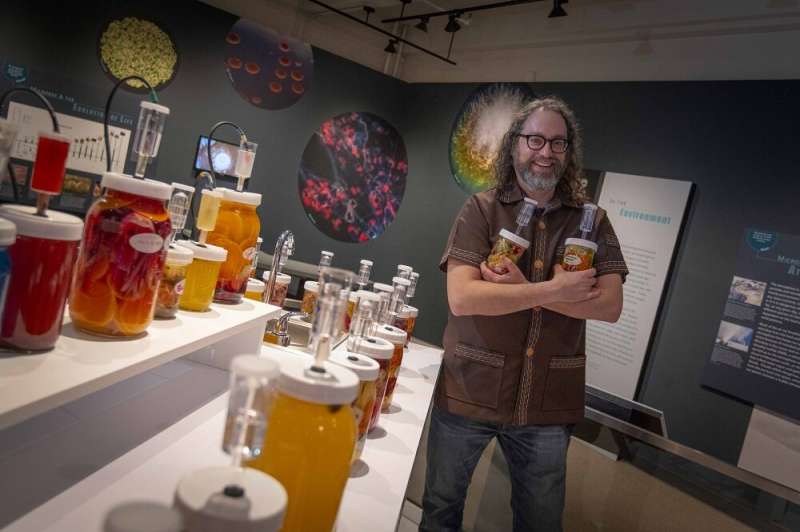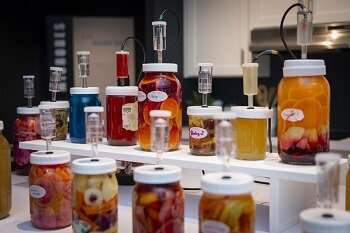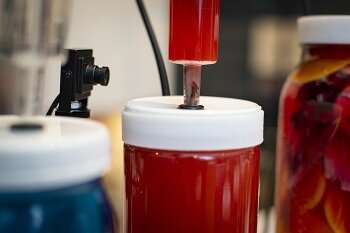Meet the Fermentophone: An edible musical instrument made of fermented fruits

Fermentation gives the world some of its most delicious foods and beverages, like cheese, chocolate, beer, wine, and more.
Now, it can give us a treat for our ears—music.
Based on the research of Joshua Rosenstock, associate professor of Interactive Media and Game Development and Humanities & Arts, it turns out that the chemical processes of fermentation can be used to create spontaneous tunes. Rosenstock has built multiple art exhibits called Fermentophone to showcase how fermentation can make music.
"It's a project I've been working on for the past five years," says Rosenstock, who has a strong interest in food and music. "It's open-ended art with a serendipitous result."
And now, this art will be displayed.
Rosenstock and Fermentophone are headed to the Harvard Museum of Natural History on Saturday, Feb. 8, for its I <3 Science exhibit, which is open to the public until Feb. 23. Here, along with two "Meet the Artist" events at the exhibit on Feb. 18, 10–11 a.m., and Feb. 22, 2–3 p.m., Rosenstock will present a multimedia installation of more than 50 "living food-art" jars, created in collaboration with members of the local community.

"It's an exhibit that invokes all of the senses," he says.
Fermentophone works like this—first, different fruits and veggies are placed in glass jars and fermented following the time-honored fermentation processes used to make things like sauerkraut and wine. As the fermentation kicks off, the yeast—or bacteria—present in the food chows down on the foods' sugars, which results in the release of carbon dioxide bubbles. The release of these bubbles—or "burps," as Rosenstock calls them—creates a tiny sound, which is picked up by underwater microphones. A computer processes the sounds and, with the help of algorithms plugged in by Rosenstock, electronic music is created.
Influenced by the improvisational nature of jazz, Rosenstock envisions the Fermentophone as a creative partnership between himself and the microbes. He establishes the pitch and melody of the music, but the microbes—and how slowly or quickly they ferment—control the rhythm of each note.
"Different foods provide different grooves," he says. "Fruits, which have more sugars, tend to make a more vigorous rhythm, whereas vegetables, which have less sugar, are mellower."

Light and temperature can influence the rate of fermentation—and the resulting music, too. "The more heat and light there is in the room while fermentation is happening, the more activity there is," Rosenstock says.
The Fermentophone hits the road often, too. In addition to the upcoming Harvard exhibit, Rosenstock has displayed it in various exhibits across the country, including Fermentation Fests in Boston and Wisconsin, the Hacking Arts festival at MIT, and the Expo '74 Science Fair at MassMoCA. For some of these exhibits, attendees have been able to make their own food art—scrunching up food with their hands and positioning it in a glass jar, preparing it for fermentation. From there, Rosenstock has been able to connect the food creations to the Fermentophone technology and make music.
And, for those wondering, Rosenstock said, yes, you technically can eat the fermented foods. His art is food, after all.
"The same microbes that help make delicious foods and drinks also make up an important part of the human microbiome. I hope to use Fermentophone's music to draw attention to our symbiotic relationship with our microbial partners."
Provided by Worcester Polytechnic Institute




















